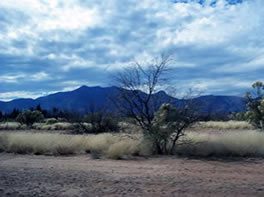William Marshall
Tucson, Arizona, United States
 |
| Huachuca Mountains Photography by J. G. Park |
When family and friends from back East ask me about the Arizona/Mexico border, two images come to mind: first, an almost unlimited view of blue sky and distant mountains; second, a sick, frightened teenage boy sitting on an exam table in the urgent-care clinic.
Hiking among the pines on the Crest Trail in the Huachuca Mountains, a range that extends to the border itself, one can see for miles in all directions; far south to ranges in Mexico, the US/Mexico border running east and west, and north to peaks and valleys in Arizona. There are large areas of oak and juniper scrub forests below, a rich green landscape that then yields to drier grasslands and deserts, and then faraway ridge lines of distant mountains. Coronado passed this way 500 years ago. From this vantage point, near 10,000 feet, the quiet and the visual beauty of this place overwhelm any thoughts of the border as a turbulent, divisive, dangerous region. But the border is not just a geographic or political demarcation; this geographically straight line has, when viewed closely in human terms, a fractal pattern of interlaced lives. My understanding of this complexity has grown incrementally as I have cared for patients who lived near the Arizona/Sonora border.
The final patient of our evening urgent-care clinic in Tucson came in near closing time. (Why do the most complex patients seem to come last?) Ruben was a thin, ill-appearing 16-year-old accompanied by his uncle, a man in his forties. I introduced myself and asked Ruben what was wrong. When he didn’t respond, I turned to his uncle, who explained in English that Ruben had been ill for several days with fever and chills. He had no prior records in our files, and my follow-up questions were met with a look of puzzlement from the uncle. I switched to Spanish to obtain the rest of the history, but wasn’t sure how well he understood me since his answers were vague: Ruben had always been healthy; no one else was sick; there was no recent travel. Ruben still said nothing.
I examined Ruben. He was pale, thin, slightly dehydrated, and tachycardic. He had a fever of 104.5. His lungs were clear, he had no rash, his abdomen was soft, and nothing else in my examination pointed to the cause of his fever. I was concerned. I ordered a blood count and blood culture. I decided that he should be admitted overnight for observation and hydration.
My plan was met with resistance from Ruben’s uncle. They had to go; he had no insurance for hospitalization. He could come back in the morning, if needed, to be checked again. Unsure of my Spanish, I asked one of our bilingual nurses to help. She reiterated my concerns, but the uncle stood his ground and prepared to leave. Ruben said nothing. The nurse confirmed the address and phone number for the family, and they left, promising to return in the morning.
Ruben didn’t return. We called; there was no answer. We called again that afternoon; again, no answer. I checked with our front desk clerk to confirm the phone number; she and the bilingual nurse told me that they didn’t think Ruben spoke English or Spanish, or that Ruben’s “uncle” was really a family member. Ruben was small and dark skinned; his “uncle” was much lighter skinned and much bigger.
By the next day, we knew that the address was also false; there was no such location in Tucson. Ruben was not admitted to any of the local hospitals, and it seemed likely he had left the state, possibly for California.
I had made some wrong assumptions, not yet understanding how the border is a nonlinear, permeable divide of lives and biogeography. Communication is not just a bilingual challenge; Ruben was probably a refugee from the far south of Mexico or Central America. He likely spoke and understood an Indian language, not Spanish. Families are not always families; his “uncle” was probably a coyote, a transport agent for illegal immigrants. I should have insisted on hospitalization, but believed I was helping him and his family. Did he recover? I’ll never find out. Did he make others ill? I’ll never know. But borders are not barriers, with one set of diseases on one side and a different list on the other. Ruben’s blood culture came back positive for Salmonella typhi; Ruben had typhoid fever.
WILLIAM MARSHALL, MD, is professor of clinical pediatrics at the University of Arizona College of Medicine in Tucson, Arizona. He graduated from Lehigh University and the University of Rochester School of Medicine and Dentistry. His current clinical activities include attending at the newborn nursery and the general pediatric clinic. Part of his time is spent teaching preclinical medical students about history and physical examination skills.
Highlighted in Frontispiece Winter 2013 – Volume 5, Issue 1
Winter 2013 | Sections | Doctors, Patients, & Diseases

Leave a Reply